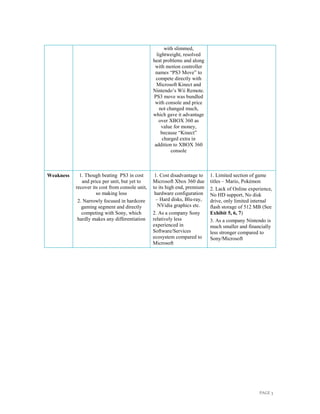The document provides an analysis of the 7th generation game console industry, focusing on the major players Xbox 360, PlayStation 3, and Nintendo Wii between 2005-2013. It summarizes that:
1) Nintendo succeeded through a differentiated strategy targeting casual gamers with its low-cost and motion-sensing Wii console, outselling rivals.
2) Both Microsoft and Sony focused on hardcore gamers but struggled with high production costs, though built strong brands and game libraries.
3) The industry now faces challenges from mobile/social gaming, but console gaming remains lucrative with new revenue models and popular franchises.























